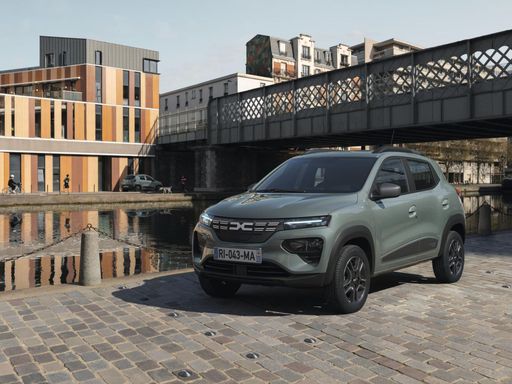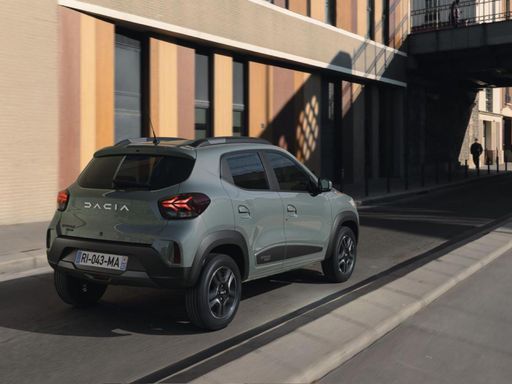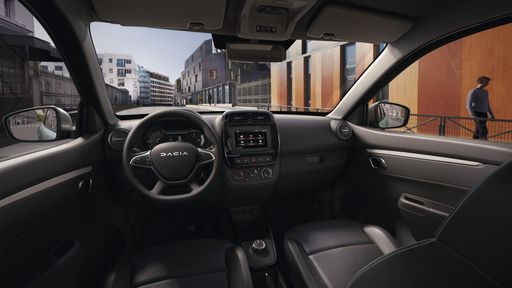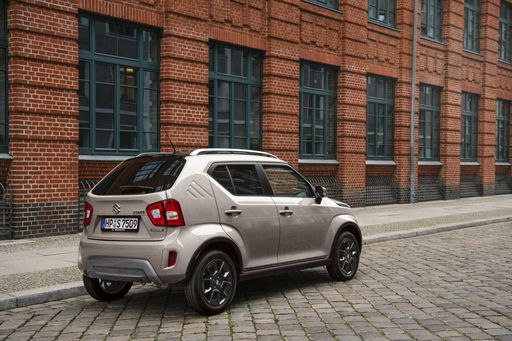Dacia Spring vs Suzuki Ignis – Which one offers the better deal?
Two cars, one duel: Dacia Spring meets Suzuki Ignis.
Which one wins in performance, efficiency and value for money? Find out now!
Costs and Efficiency:
When it comes to price and running costs, the biggest differences usually appear. This is often where you see which car fits your budget better in the long run.
Dacia Spring has a slight advantage in terms of price – it starts at 14500 £, while the Suzuki Ignis costs 15600 £. That’s a price difference of around 1123 £.
Engine and Performance:
Power, torque and acceleration say a lot about how a car feels on the road. This is where you see which model delivers more driving dynamics.
When it comes to engine power, the Suzuki Ignis has a evident edge – offering 83 HP compared to 65 HP. That’s roughly 18 HP more horsepower.
In acceleration from 0 to 100 km/h, the Suzuki Ignis is barely noticeable quicker – completing the sprint in 12.70 s, while the Dacia Spring takes 13.70 s. That’s about 1 s faster.
In terms of top speed, the Suzuki Ignis performs distinct better – reaching 165 km/h, while the Dacia Spring tops out at 125 km/h. The difference is around 40 km/h.
There’s also a difference in torque: Dacia Spring pulls somewhat stronger with 125 Nm compared to 107 Nm. That’s about 18 Nm difference.
Space and Everyday Use:
Beyond pure performance, interior space and usability matter most in daily life. This is where you see which car is more practical and versatile.
Seats: Suzuki Ignis offers slightly more seating capacity – 5 vs 4.
In curb weight, Suzuki Ignis is barely noticeable lighter – 935 kg compared to 1013 kg. The difference is around 78 kg.
In terms of boot space, the Dacia Spring offers slightly more room – 308 L compared to 267 L. That’s a difference of about 41 L.
In maximum load capacity, the Suzuki Ignis performs minimal better – up to 1100 L, which is about 96 L more than the Dacia Spring.
When it comes to payload, Suzuki Ignis noticeable takes the win – 395 kg compared to 302 kg. That’s a difference of about 93 kg.
Who comes out on top?
Overall, the Suzuki Ignis shows itself to be dominates this comparison and secures the title of DriveDuel Champion.
It convinces with the more balanced overall package and proves to be the more versatile choice for everyday use.
 @ Suzuki Motor Corporation
@ Suzuki Motor Corporation
Suzuki Ignis
Dacia Spring
The Dacia Spring stands out as an affordable and environmentally friendly option in the electric vehicle market, combining practicality with a compact design ideal for urban settings. Its minimalist interior, while basic, provides all the essential features needed for a comfortable drive, reflecting its cost-effective approach. The vehicle's performance suits city driving, making it an appealing choice for those seeking an entry-level electric car.
details @ Dacia / Renault Group Media
@ Dacia / Renault Group Media
 @ Dacia / Renault Group Media
@ Dacia / Renault Group Media
 @ Dacia / Renault Group Media
@ Dacia / Renault Group Media
Suzuki Ignis
The Suzuki Ignis is a compact car that stands out with its unique blend of small SUV aesthetics and city-friendly dimensions. Its playful and distinctive design, combined with a practical and elevated driving position, makes it an appealing choice for urban dwellers seeking versatility without compromising on style. Inside, the Ignis offers a surprisingly spacious cabin with innovative storage solutions, making it ideal for those who need a functional yet characterful vehicle.
details @ Suzuki Motor Corporation
@ Suzuki Motor Corporation
 @ Suzuki Motor Corporation
@ Suzuki Motor Corporation
 @ Suzuki Motor Corporation
@ Suzuki Motor Corporation
 @ Suzuki Motor Corporation
@ Suzuki Motor Corporation
 @ Suzuki Motor Corporation
@ Suzuki Motor Corporation
 @ Dacia / Renault Group Media
@ Dacia / Renault Group Media
|
 @ Suzuki Motor Corporation
@ Suzuki Motor Corporation
|
|
|
|
Costs and Consumption |
|
|---|---|
|
Price
14500 - 17100 £
|
Price
15600 - 19500 £
|
|
Consumption L/100km
-
|
Consumption L/100km
4.9 - 5.4 L
|
|
Consumption kWh/100km
13.2 - 14.1 kWh
|
Consumption kWh/100km
-
|
|
Electric Range
225 - 228 km
|
Electric Range
-
|
|
Battery Capacity
26.80 kWh
|
Battery Capacity
-
|
|
co2
0 g/km
|
co2
110 - 122 g/km
|
|
Fuel tank capacity
-
|
Fuel tank capacity
30 - 32 L
|
Dimensions and Body |
|
|---|---|
|
Body Type
SUV
|
Body Type
SUV
|
|
Seats
4
|
Seats
4 - 5
|
|
Doors
5
|
Doors
5
|
|
Curb weight
1013 - 1050 kg
|
Curb weight
935 - 995 kg
|
|
Trunk capacity
308 L
|
Trunk capacity
204 - 267 L
|
|
Length
3701 mm
|
Length
3700 mm
|
|
Width
1583 mm
|
Width
1690 mm
|
|
Height
1519 mm
|
Height
1605 mm
|
|
Max trunk capacity
1004 L
|
Max trunk capacity
1086 - 1100 L
|
|
Payload
265 - 302 kg
|
Payload
335 - 395 kg
|
Engine and Performance |
|
|---|---|
|
Engine Type
Electric
|
Engine Type
Petrol MHEV
|
|
Transmission
Automatic
|
Transmission
Manuel, Automatic
|
|
Transmission Detail
Reduction Gearbox
|
Transmission Detail
Manual Gearbox, CVT
|
|
Drive Type
Front-Wheel Drive
|
Drive Type
Front-Wheel Drive, All-Wheel Drive
|
|
Power HP
44 - 65 HP
|
Power HP
83 HP
|
|
Acceleration 0-100km/h
13.7 - 19.1 s
|
Acceleration 0-100km/h
12.7 - 12.8 s
|
|
Max Speed
125 km/h
|
Max Speed
155 - 165 km/h
|
|
Torque
113 - 125 Nm
|
Torque
107 Nm
|
|
Number of Cylinders
-
|
Number of Cylinders
4
|
|
Power kW
33 - 48 kW
|
Power kW
61 kW
|
|
Engine capacity
-
|
Engine capacity
1197 cm3
|
General |
|
|---|---|
|
Model Year
2024
|
Model Year
2020
|
|
CO2 Efficiency Class
A
|
CO2 Efficiency Class
C, D
|
|
Brand
Dacia
|
Brand
Suzuki
|
What drive types are available for the Dacia Spring?
The Dacia Spring is available as Front-Wheel Drive.
The prices and data displayed are estimates based on German list prices and may vary by country. This information is not legally binding.
